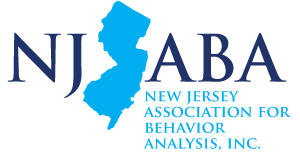FAQ
Where can I obtain information about publicly funded early intervention services?
State-funded services for children birth – age 3 are provided by the New Jersey Early Intervention System (NJEIS) in partnership with the Regional Early Intervention Collaboratives (REICs).
As a BCBA in the NJEIS system, how can I adhere to the Behavior Analyst Certification Board’s (BACB) Professional and Ethical Compliance Code requirements for the supervision I provide when supervision is not a billable service?
Be able to describe your professional obligations and any challenges and obstacles you encounter.
Inform your supervisor and agency leadership of current ethical code for supervision. Discuss how the agency can support you in maintaining your ethical obligations and how sessions will be scheduled to promote supervision.
Ask your agency to review the Professional and Ethical Compliance Code with all BCBAs, BCaBAs, ABA therapists and members of the interdisciplinary team to ensure understanding of and compliance with Section 7 of the code.
Use a combination of direct supervision, data review, and data collection on parents’ implementation as well as generalization checks to meet the supervision requirements.
Supervisors and supervisees should communicate a plan for meeting the supervision guidelines and how they will be tracked for each client.
How can I ensure that I communicate or meet with the other members on the client’s treatment team on an ongoing basis?
Hold Individual Family Service Plans (IFSP) meetings more frequently than the typical review period of every 6 months.
“Co-treats” – having the child’s session with another therapist. Some regions of the NJEIS discourage same-discipline co-treats, and this may need to be addressed with the agency.
Personal communication with team members through the communication log with all therapists, the program book that remains at the home, email, text, online document sharing, etc.
Speak to the service coordinator regarding this concern. Express the need to be consistent in providing effective ABA services and that ABA programs should be delivered consistently between therapists on a team.
How can I involve the parents in the client’s ABA sessions?
The NJEIS is a family training model and parent training should therefore be incorporated into all services.
• Focus on goals that are meaningful to the family and can be incorporated into routines outside of sessions.
• Provide the family with direct instruction regarding how to implement research-based strategies with their children.
• Incorporate parents as an active participant in sessions while providing coaching and feedback.
• Shape parents’ behavior by initially selecting strategies and goals that are easily attainable and easy to implement. This way the parent can access reinforcement through success.
• Speak to the service coordinator about including family training as a billable service. This will allow the therapist to work with the parent outside of direct instruction with the child. The therapist will then be able to spend more time familiarizing the family with behavioral principles and providing opportunities for discussion and behavioral skill acquisition.
• See resources regarding behavioral skills training and parent training protocols:
How can I make my session most effective given all of the distractions of typical family life?
Use an evidenced-based parent training model during your sessions to help guide the process and keep the family focused on the goals at hand. This may include using written guides that can be referred to from one session to the next to help focus the parent.
Use principles of applied behavior analysis when interacting with parents and caregivers. Use a task analysis to give caregivers small steps that they can build upon once they have success. Use differential reinforcement and praise for all attempts at carrying over a suggestion and offer feedback and support to make modifications in the future to guide those attempts towards success.
Incorporate behavioral skills training by discussing a skill or strategy, modeling the skill or strategy and then having the caregiver practice the skill or strategy while you observe. Give praise and or feedback in the moment and go back to modeling the skill again if necessary. Continue on in this manner until the caregiver can successfully demonstrate the skill or strategy. Make sure to follow up at your next session as to how the caregiver has been doing when you were not there. Ask them to demonstrate the skill or strategy for you again so that you can ensure successful implementation and offer ways to then build upon that skill.
Take a step back and look at the big picture, what is most important for this family and how can you make an impact in that area. If a family feels successful in even the smallest of ways, they will be more likely to follow your future suggestions.

